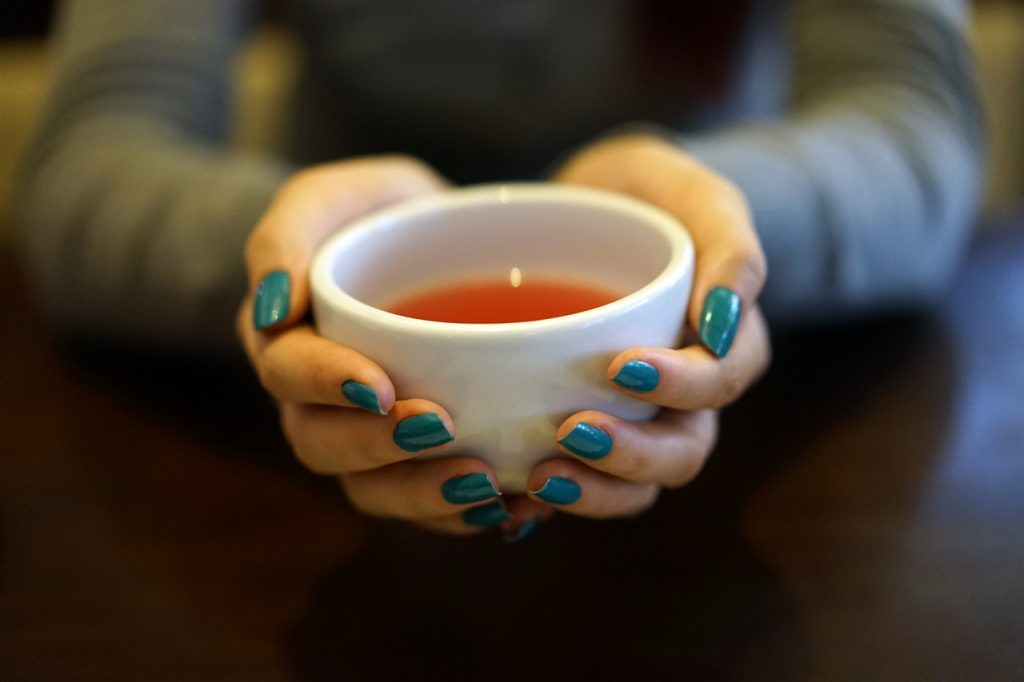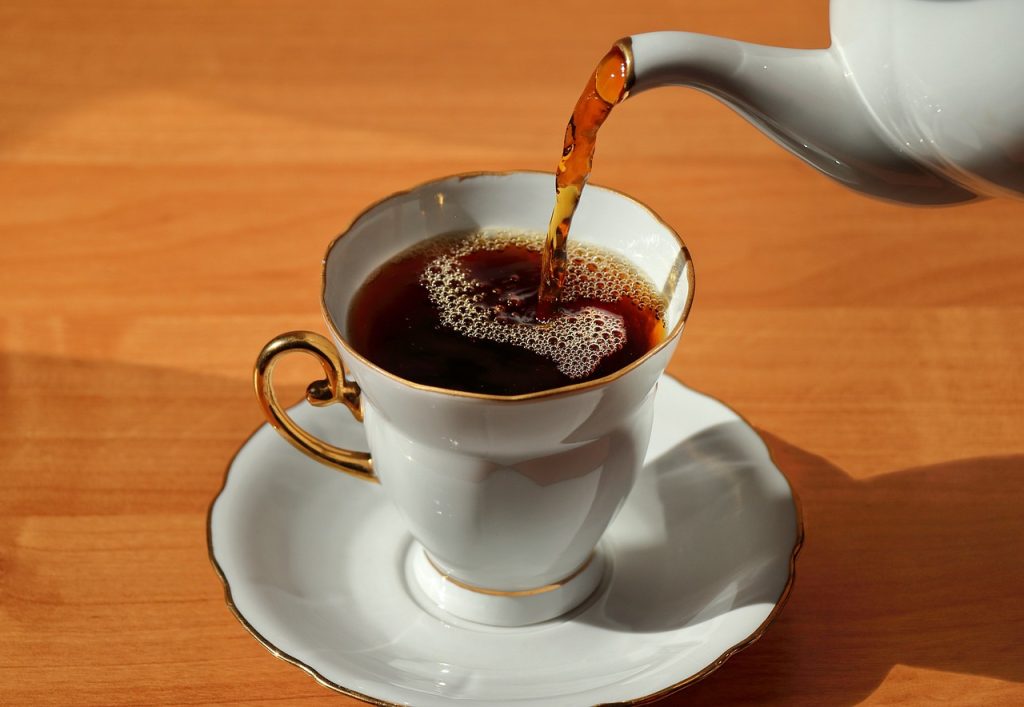Here at Nice Hot Cuppa, we get asked about the many different types and varieties of tea. Knowing where to start and brewing techniques can be overwhelming for anyone looking to dip their toes in (metaphorically, of course) or expand their tea-tasting experience.
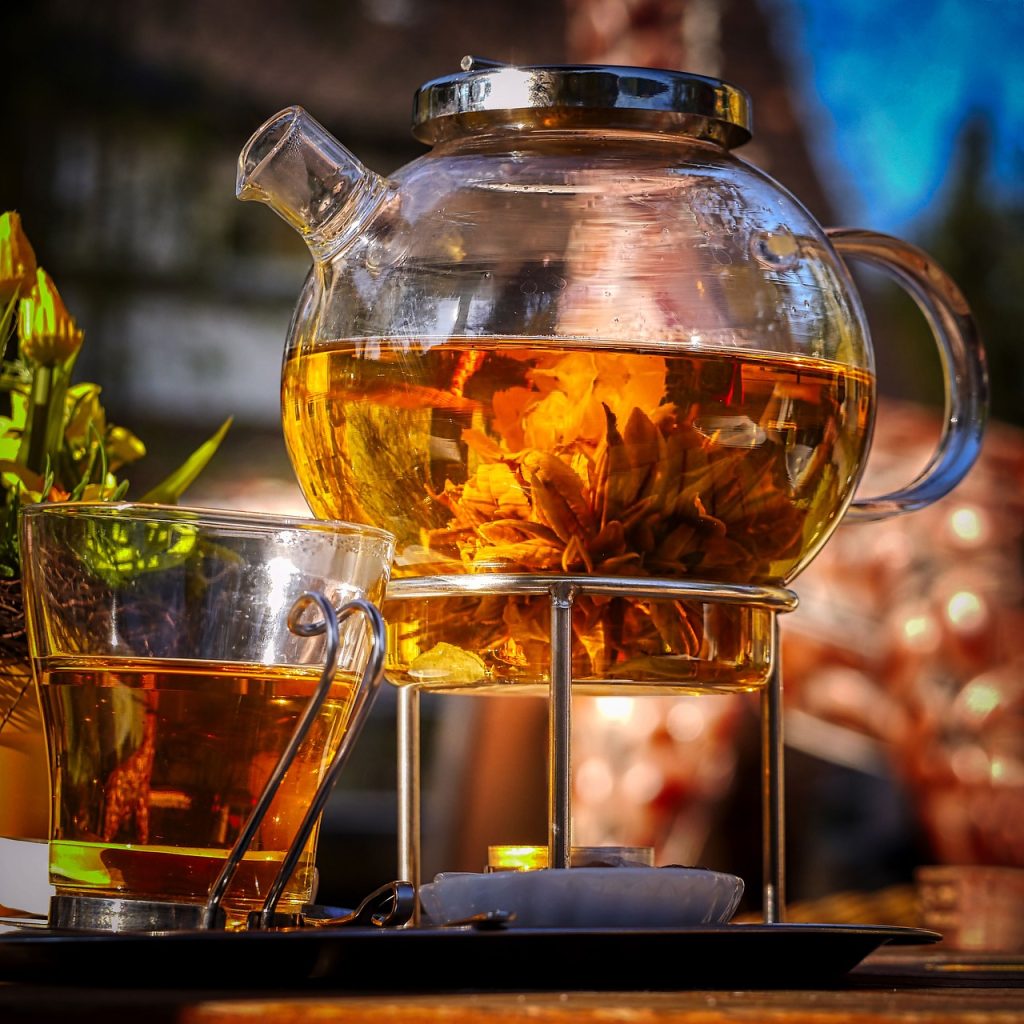
So, during one of the many lockdowns here on the North Coast of Ireland, we decided to create this beginner’s guide to tea. This guide will look at everything from the different tea types and their flavour profiles to proper brewing methods and what teaware is needed for brewing and drinking tea.
Our aim with this beginner guide to tea is after reading; you’ll have a better idea when choosing the right tea for you and find out how to best brew it.
We’ve even created a starter bundle for those looking for an easy way to get on their tea journey. The starter bundle comes with a tea strainer and a 5g sample of white, green, oolong and black tea – the perfect amount to brew a perfect cup and discover your new favourite!
.
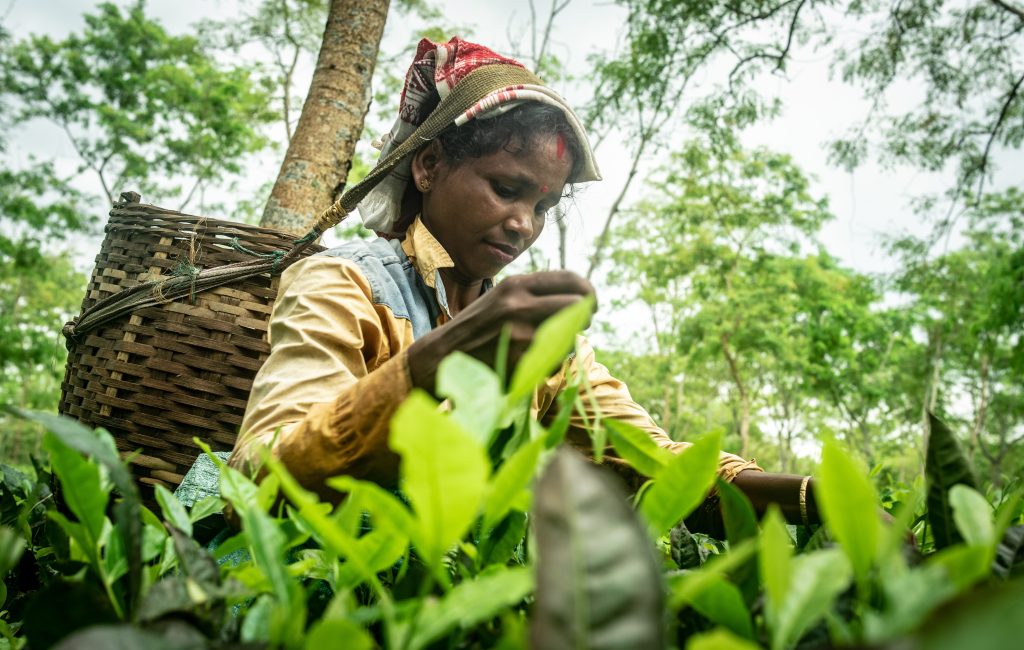
History Of Tea
The history of tea as a drink is a long and complex one. The earliest known reference to the use of tea is found on a Chinese clay tablet from around 2000 BC, which mentions that it was used as an antidote for poison and has medicinal properties. Tea drinking became popular during the Tang Dynasty when Chinese emperors began using it as part of their daily routine. It was believed then that consuming tea would help prevent illness, disease and have other health benefits.
Tea was first introduced to Europe by Arab traders during the Middle Ages. It became popular among Europeans after being brought back to Britain by East India Company merchants in the 1660s. During the 18th century, tea drinking spread throughout Britain and eventually across the world. Today, more than half of all people in the world drink some form of tea every day.
Types of Tea

Essentially, the tea world is divided into three main categories: true teas, herbal tisanes, and flavoured teas. Below, we’ll learn more about each tea type, its characteristics, and what makes each unique.
True Teas
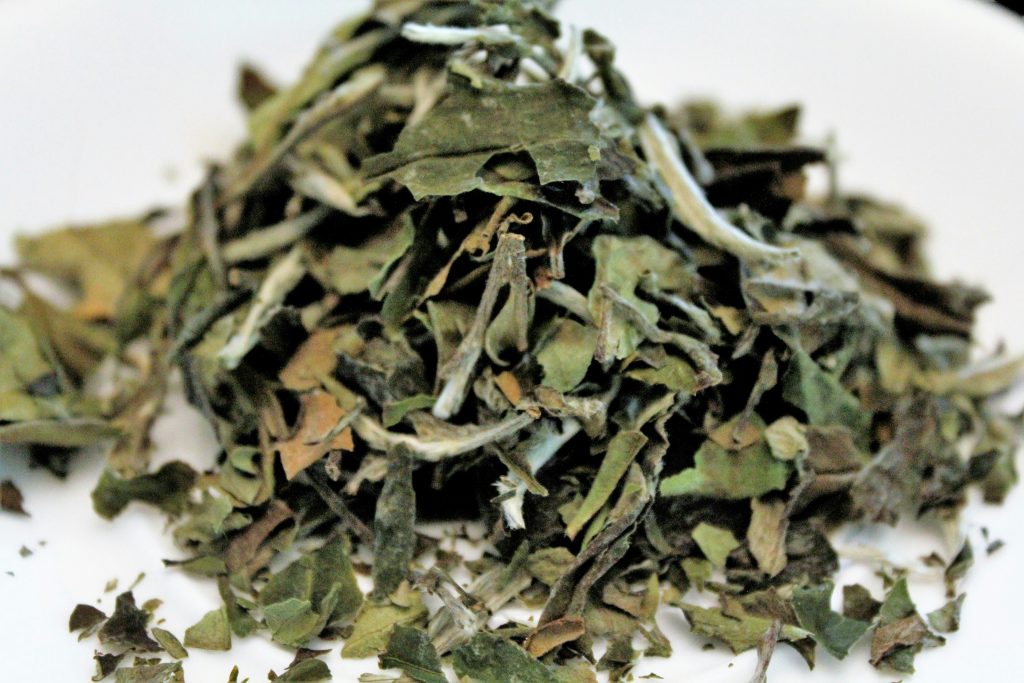
True teas are those derived from the leaves of the Camellia sinensis plant. scientific name Camellia sinensis was taken from the Latinised ‘Kamel’, named after the botanist Rev. Georg Kamel. The word sinensis means ‘from China’ in Latin.
When considering true teas, they can be broken down into different categories, the most common we know by colour, like White tea, Green tea and Black tea. Others include Oolong tea, Pu-Erh tea and finally a rarer category is Yellow tea. All these teas are made using the leaves of the Camellia sinensis plant and are naturally caffeinated
The differences in each tea come from how they are produced, which affects the distinct colour, flavour, and aroma of the different types of tea.
All other tea types are considered flavoured teas or herbal tisanes since they are not derived from the Camellia sinensis plant.
White Tea
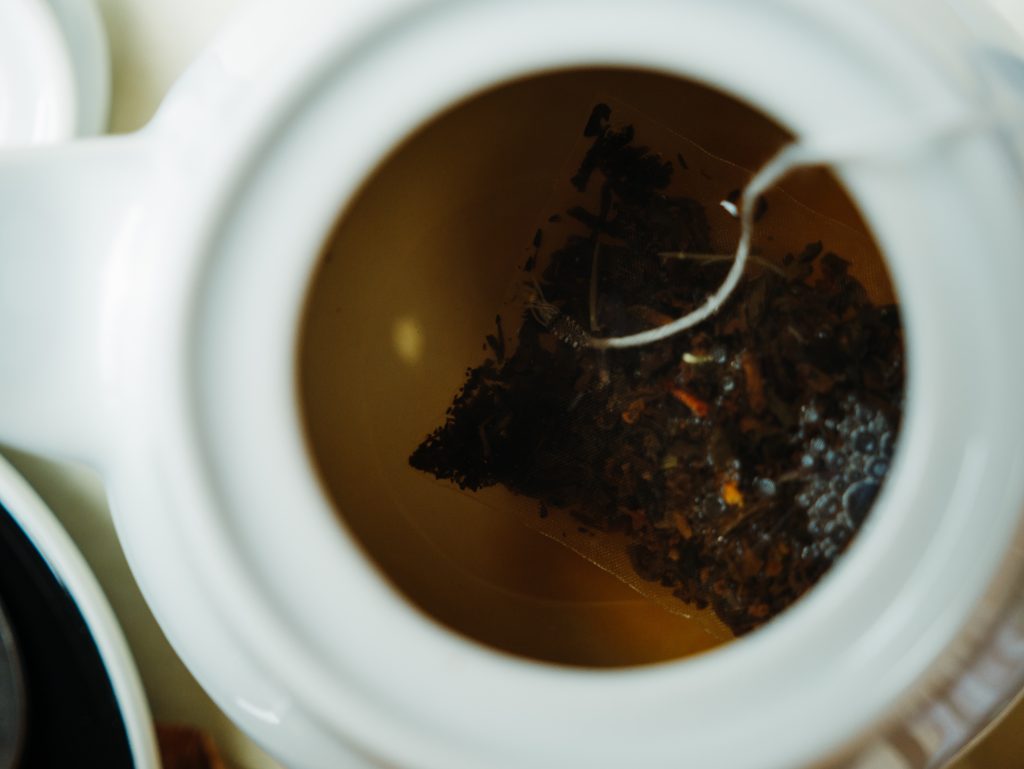
How Is White Tea Made?
White tea is the true tea with the least processing involved in its manufacture. White tea is made using the leaves and only the youngest buds of the tea plant. The tea leaves and buds are harvested by hand then dried in direct sunlight. When all moisture is removed from the leaves, the tea is graded, sorted and packaged for shipping.
How Does White Tea Taste?
White teas have a subtly sweet flavour, a light body, and a long finish. Their taste can be complex and nuanced as the tea lingers on your palate. Many having floral, nutty, or a mildly fruityflavours depending on where it is grown and how it’s produced. White tea is generally a light golden or yellow colour when brewed and gives off a soft aroma.
What are the best White Teas?
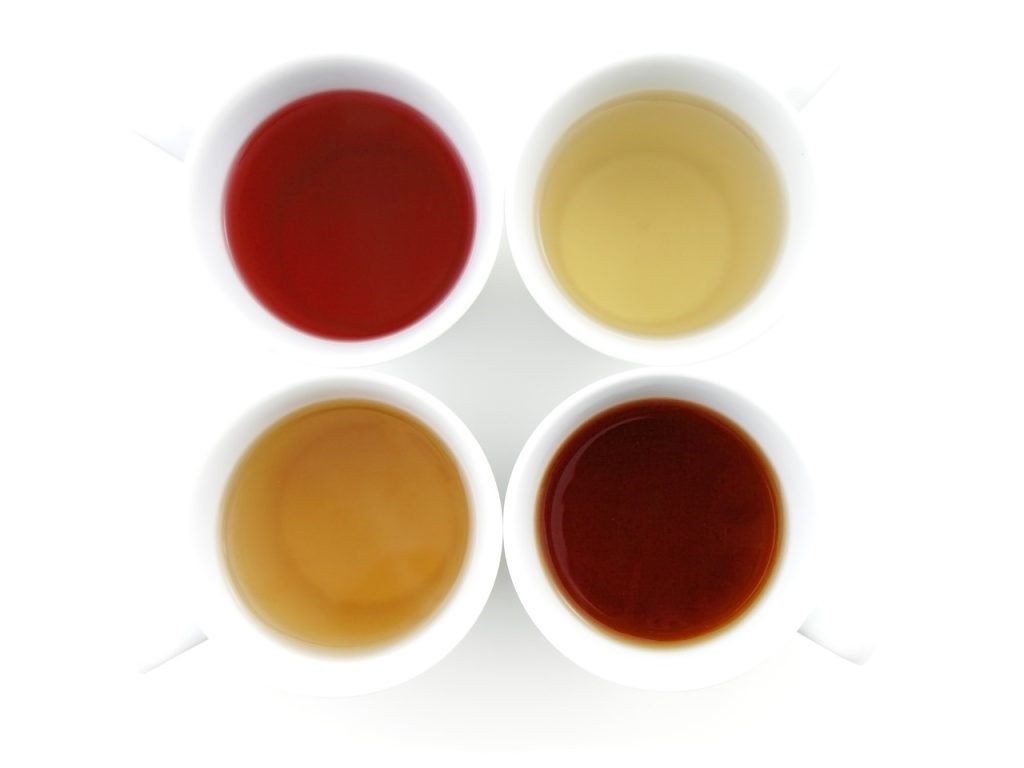
The highest quality white teas are called Silver Needle, grown in the Fo Zi mountains, a famous tea producing area; these tiny tea buds are handpicked from a wild tea garden or forest. As the tea bushes are scattered far and wide, only a small amount of buds are harvested each year, making this superb tea a real treasure.
The second best, in our opinion, is White Peony, made from the first unopened bud on a branch and the next two leaves.
Where White Tea is From
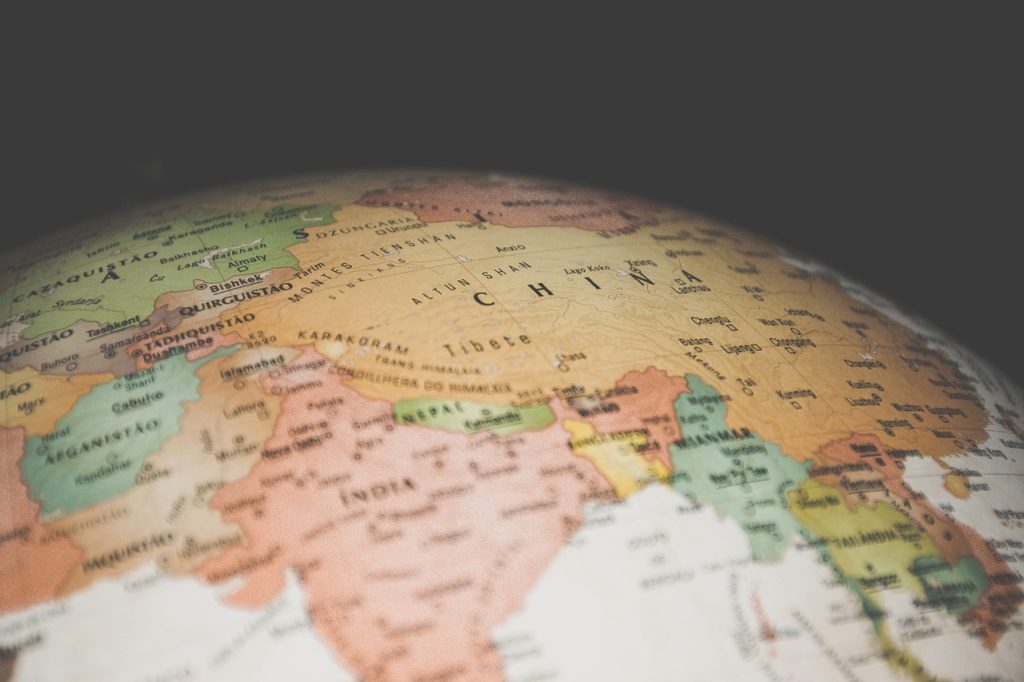
White teas are mainly produced in China, particularly in the Mountains of the Fujian province, which has a rich history of tea production. Countries like Nepal, Taiwan, and Sri Lanka also produce many speciality white teas.
How To Brew White Tea
As White tea uses only the youngest buds and leaves, it is a delicate tea. Therefore, we recommend brewing between 80-85°C or 176-185°F. It’s best to brew this type of tea using a temperature-controlled tea kettle or thermometer to ensure the correct water temperature for brewing. Use 1 to 2 teaspoons for every 225ml of water, then brew for 3 to 5 minutes. The longer the tea brews, the stronger the tea will taste.
Green Tea
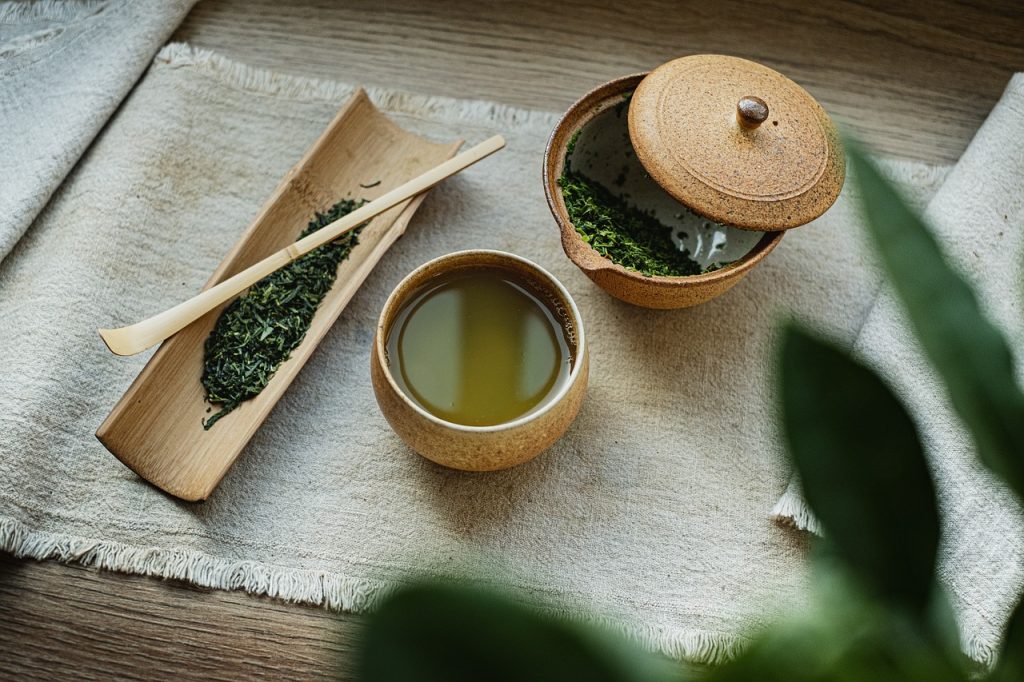
How is Green Tea Made?
Similar to White Teas, Green teas go through a minimal production process. Tea leaves are handpicked and then dried using one of two methods. The pan-firing method is most common when producing Chinese green teas, where the leaves are heated over fires using large pans similar to woks.
Steaming is the other method used, which is more often associated with the production of Japanese green teas. The length of the steaming process varies according to the particular tea master and directly affects the flavour and quality of the tea produced.
Steaming or pan-firing is used to stop the oxidation process in the leaves. Halting the oxidation as soon as possible after picking gives green tea its distinct bright green colour and light, earthy taste. Once dry, the tea leaves are pressed or rolled, often by hand, into their final shape and dried.
How Does Green Tea Taste
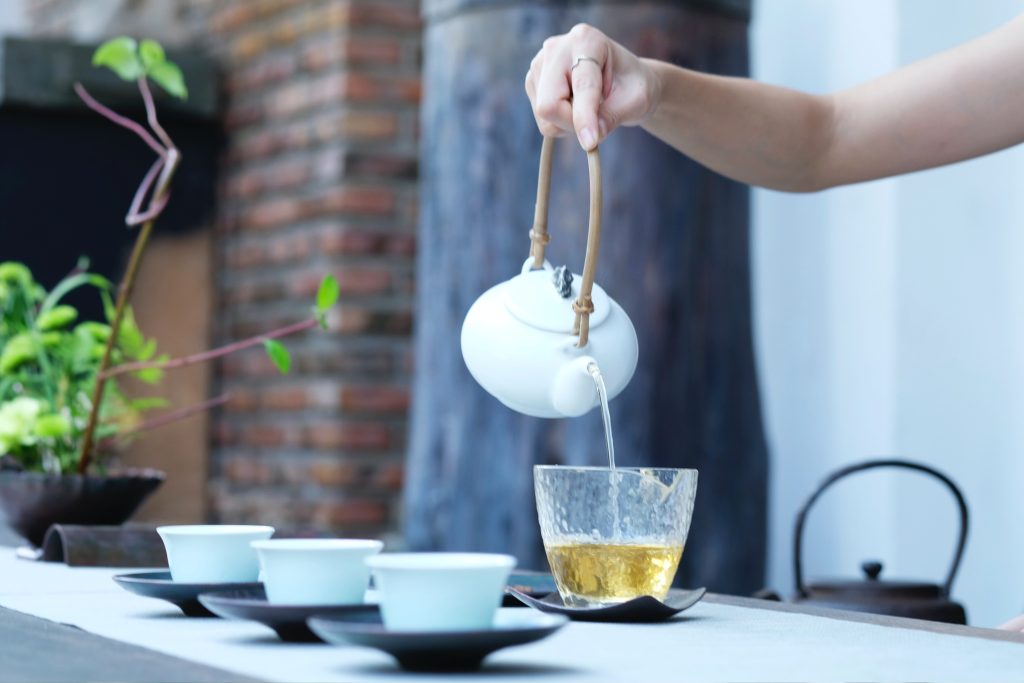
The flavour of green tea can range from a grassy and earthy taste to a more flora and umami taste. Steamed green teas, such as those from Japan, tend to have more herby flavour. Pan-fired green teas from China generally have a nuttier and more earthy flavour, even slightly bitter taste.
Types Of Green Teas
Some of the best green teas include varieties from Japan and China. Green Teas from Japan are sencha, gyokuro, genmaicha, and matcha, among the most popular.
Japanese Green Teas
Sencha tea – This tea is the most common style found today, representing 80% of all tea produced in Japan. 90% of sencha is grown from the Yabukita cultivar of the tea plant. It is savoury with a mild body and hints of pine and melon.
Gyokuro – This tea is uniquely grown under shade for the last few weeks before harvest. This technique produces a sweeter flavour and a particularly dark green colour thanks to the higher amounts of chlorophyll in the leaves.
Genmaicha – This tea is Sencha Tea brewed with toasted brown rice kernels. The rice lends the green tea its toasted flavour and a fuller body. The rice also helps to even out the slight bitterness that can be found in green teas.
Matcha tea – This tea is possibly the most famous of the Japanese green teas. Like gyokuro, matcha is shaded before harvesting in a process called tencha. The leaves are then ground into a fine powder, which is matcha. Because the Matcha tea powder is very perishable, matcha is usually sold in small quantities and has a high price tag. Matcha is the type of tea used in Japanese tea ceremonies.
Chinese Green Teas
Some of the best green teas include varieties from Japan and China. Green Teas from China are Longjing and Gunpowder, which are among the most popular.
Longjing green tea – This tea, sometimes known by its English Translation as “Dragon Well” tea, is grown Zhejiang province of China. Longjing is the most well-known pan-fired Chinese green tea. Its flavour derives partly from the environment of the region it is grown.
Gunpowder green tea – This teas name comes from the shaping of tea leaves in production. Once dried, the tea leaves are rolled into tiny pellets that look like small bullets. This type of tea has a rich cultural history in China and was enjoyed by the rulers of the Tang Dynasty. Gunpowder green tea has a roasted flavour.
How To Brew Green Tea
To brew great green tea, it’s essential to use the correct water temperature. Boiling water will scald the leaves and cause the tea to have a bitter taste. Instead, we recommend you use water at around 75°C or 167°F. Brew a teaspoon of green tea leaves for every 225ml of water for 3 to 5 minutes according to taste.
Oolong Tea
<image>
How is Oolong Made?
Oolong teas are mainly produced in China and some in Taiwan and are considered semi-oxidised teas, which darkens the tea leaves and alters the flavour of the tea.
Oolong tea leaves are picked in the early summer period and stored in wicker or bamboo baskets. This helps to bruise the leave which releases its enzymes. The leaves are then spread over bamboo matting to dry in the regions intense midday sun, being turned and stirred regularly to ensure they are oxidised evenly.
The oxidation process varies from producer to producer but can be anywhere from 8 to 85 per cent. Once the oxidation level required has been reached, the leaves are heated by pan-firing to end the oxidation and seal the flavour of the tea.
What Does Oolong Taste Like?
An oolong teas, flavour depends on the oxidisation levels. Heavily oxidised Oolong tends to have a more robust, earthier flavour, while less oxidised oolongs are lighter and more floral in taste.
Types Of Oolong Teas
Oolong tea is a vast category which differs hugely depending on where it is grown (e.g. China or Taiwan), how long it is allowed to oxidise and any additional production methods like roasting.
Taiwanese Oolong Tea
BAI HAO (Oriental Beauty) – Also known as Oriental Beauty. Bai Hao is grown low in the mountains of Taiwan and is heavily oxidised. The unique growing methods of this tea create a lovely oolong with delicate flavors and no trace of bitterness.
Dongding – This Oolong is also known as Frozen Summit or “Ice Peak” and is named after the mountain where the tea is grown in Nantou County, Central Taiwan. This is a tightly rolled tea with a light, distinctive fragrance.
Chinese Oolong Tea
This is a very famous Chinese tea. It is no longer possible to harvest from the original Da Hong Pao mother trees due to their protected status. However, we are very excited to offer this Da Hong Pao because it is as close to the original plant that can currently be purchased. This Beidou cultivar originates from cuttings of the mother trees.
JIANG HUA XIANG DANCONG (Ginger Flower Aroma)
This is a beautiful example of a ‘Dancong’ tea picked from a single bush. Moreover, ‘Hua Xiang’ refers to tea drinkers a floral aroma, an example of a ginger flower fragrance.
Jiang Hua Xiang proves this tea game very popular with the locals on Phoenix Mountain and is definitely one of our favourites. This Ginger Flower Aroma Dancong is an alluring tea with the right balance of sophistication that delivers on taste to your palate.
YA SHI XIANG DANCONG (Duck Sh*t Oolong)
This tea is widely known as Duck Shit Aroma Oolong due to the legend associated with it. Whilst it doesn’t actually smell like duck poo, the story is believed to have been spread by the original tea farmer to protect his precious tea from theft, both physically and in his production style.
Dancong is a category of oolongs and means’ tea picked from a single bush’ these teas are often associated with particular aromas, which often leads to their naming.
How To Brew Oolong Tea
To brew a great oolong tea, use 1 heaped teaspoon for every 200ml of water. Oolongs develop flavour best when the brewing temperature of the water is between 80C and 90 degrees Celcius. Brew the leaves for 2 to 5 minutes, depending on your desired flavour. Longer brewing times increase the body and flavour of oolongs, so we recommend you taste the tea every 30 seconds or so to find your perfect cup.
Black Tea
<image>
How is Black Tea Made?
Black tea is the most processed of the five true teas. The leaves of black tea are picked and then dried using direct sunlight and fans to speed up the drying. Once the leaves are dried, they are processed using either the Crush, Tear and Curl or the orthodox methods.
The Crush, Tear, Curl method (CTC) — This is the method that mainly produces the tea for most of the teabags you’ll find in Supermarkets by brands such as Tetley, PG Tips, Pukka, Thompsons or Clipper. The CTC technique uses machines to cut, crush and grind the tea leaves into tea fannings or dust. The end result is then packaged into tea bags and shipped for sale.
The orthodox method generally produces higher quality tea and can be done using machines or by hand. This method typically is used to create tea for loose leaf teas and tea balls.
What Does Black Tea Taste Of?
Black tea generally has a bold, earthy taste that is strong and potent. It is an excellent choice for coffee drinkers and tea lovers who enjoy bold flavours. Black tea can have nutty undertones, floral notes and savoury or sweet hints depending on the production process.
Types of Black Teas
Black tea is probably the most popular tea in the world. Produced mainly in China and India, with each country adds its own take to cultivating leaves and their flavours.
The most popular types are English Breakfast, Irish breakfast, Darjeeling and Lapsang Souchong.
English Breakfast – This type of tea is a blend of several black teas‚ usually including Ceylon, Keemun, and African black tea leaves. This full-body tea can also have mild floral notes. English breakfast tea tastes even better with a splash of milk as it creates a warm, honey-like flavour.
Irish Breakfast – This type of tea is typically based on Assam, a black tea grown in the Assam region of North East India. It is renowned for its bright coppery colour and malty solid taste. Irish Breakfast tea can also include other black teas from India and Sri Lanka, and Tanzania.
Lapsang Souchong – is a unique Chinese black tea that has a robust flavour. The lapsang souchong leaves are roasted over open pine fires to dry them. This black tea has a classic and rich flavor with distinctive smokiness that will have you reminiscing about campfires and fresh-cut spruce after rain.
Darjeeling – tea is a black tea that is less oxidised than most black tea. It is commonly known as the “champagne of teas” and features citrusy and fruity notes. Thanks to the high concentration of tannins, Darjeelings flavour is characterised as muscatel and has mildly astringent notes. The mildly sweet flavour makes it a great breakfast tea choice.
How To Brew Black Tea
If you want to brew black tea, then boiling water is best used. The piping hot water helps to draw out the strong flavour characteristics of this tea. Use 1 heaped teaspoon of black tea leaves for every 225mls of water and brew for 2 to 5 minutes.
Herbal Teas
<image>
Herbal teas, sometimes known as herbal tisanes, are not tea but made from plants other than the Camellia sinensis tea plant. The types of plants that make herbal tea range from Herbs, spices, flowers and roots. Herbal teas can even be made from various parts of the same plant. Many compliment true teas acting as sweeteners in the case of Green Tea and Black Tea. Herbal teas are generally caffeine-free and are particularly popular as a refreshing drink.
Types of Herbal Teas
The tea options in this category you are probably already familiar with. Chamomile, hibiscus, peppermint and Lavender are some of the most popular herbal tea flavours around. These teas offer a wide range of tastes, from floral and fruity to spicy and warm.
Chamomile Tea
Chamomile tea is one of the most popular herbal teas on the list. Known for its natural calming properties, it is often taken at bedtime to aid sleep. Chamomile Tea has hints of crisp green apples in its flavour. We particularly enjoy it with a dash of honey or lemon Balm from the garden to help you unwind after a tough day in the shop.
Rooibos
Rooibos tea Native to the Western Cape region in South Africa, Rooibos is pronounced ‘ROY-boss’ and means ‘Red Bush’. It has been a traditional ‘tea’ in the area for centuries and makes a beautiful hot beverage that is both naturally sweet, and nutty to taste. What’s more, it is a popular choice as an alternative to green or black tea for those who want to avoid caffeine, as the leaves are naturally caffeine-free. The plant is processed in a similar way to the Camellia Sinensis, aka the tea plant. The leaves are bruised to encourage oxidisation, giving the characteristic red colour and developing their rich flavour. Try it for yourself.
Peppermint
Peppermint tea is a fantastic herbal tea that offers a refreshing and invigorating flavour. Peppermint tea is produced from the leaves of the peppermint mint plant (Mentha piperita). Peppermint tea is a cooling beverage that is said to help aid relaxation. We also think it is the perfect iced tea drink to help cool down during a hot summer day.
Hibiscus
Hibiscus tea is a floral tea that inspires visions of tropical locales like Hawaii and Fiji. The tea takes your senses on a journey with hints of sweet and tart flavours. The colour of the tea also makes it perfect for hosting backyard tea parties, as it brews into a vibrant magenta colour.
Tea Making Equipment
<image>
It helps a lot to have the right tools on hand to get the best taste from your tea, especially when brewing loose leaf teas.
A Reusable Tea Filter, such as a pincer strainer or a collapsible strainer. This will help catch the loose leaf tea you have used as you pour the brew into your cup.
An infuser – this holds the loose leaves keeping them contained, making it less messy to infuse multiple cups of loose tea and compost the leaves when you’re done. There are different infusers for many brewing styles; however, a tea pincer is the universal teaware tool to help you when brewing loose leaf tea.
A Decent Teacup – you wouldn’t want to go to all the trouble of choosing a tea, preparing it carefully only to chuck it in any old tea mug you have lying around! Many teas taste better in special cups and feel better in your hand. Gaiwan or Yixing cups are used for many Chinese teas, while matcha green tea is best served in a wide bowl-like cup called chawan.
Tea Storage Tin – it’s crucial to have a sealed, opaque tea tin to store loose leaf tea or tea bags. A proper Tea Tin will protect your loose tea leaf or tea bags from the elements that may impact the tase, such as direct sun, moisture, and air.
What Tea Will You Try First?
We hope this guide has helped you to be able to choose a tea that best suits the taste buds that you’ve not tried before.
You can choose from one of the famous teas we have talked about here, or be bold and try some of our blends of those teas you’ve never heard of before.
Finally, the best teas are always the tea that you enjoy most. We totally accept that because we love a specific type of tea doesn’t mean you’ll love it too; where the fun in that. Don’t be afraid to experiment with flavours to discover what you enjoy.
With a bit of luck, you’ll find your favourite flavour in your next cup pour hot water.
Let us know what tea is your favourite and what you’d like to taste next on your social media. Get brewing tea, folks

